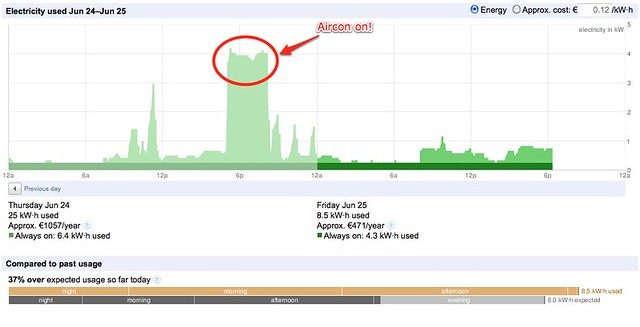
SAP runs an event called InnoJam at its developer TechEd conferences. The SAP InnoJam events are held during the weekend prior to TechEd. During these events, people from the SAP community compete against each other in teams building working prototypes of solutions to real business cases, using SAP technologies.
SAP solicit ideas for business cases to be developed at these InnoJams – I added one this morning on building a residential energy management application. The application would use a combination of gaming techniques (leader boards, achievement badges, etc) and sharing to social networks to keep customers engaged and incented to try their best to reduce their energy use.
Here’s my submission:
Energy management applications being rolled out by utility companies have a very short Mean Time to Junk Drawer (MTJD) – they are ‘all shiny’ for the first couple of weeks but the shine quickly wears off and they are soon put away in the proverbial Junk Drawer never to be opened again.
How do you make energy management applications more engaging, bringing utility company customers back again and again to try to improve on their previous energy reduction steps? You do it by turning it into a game and allowing customers to share their progress on their social network of choice!
SAP have a new application for utility customers called Smart Meter Analytics which runs on HANA. The flood of data which will be coming from Smart Meters means HANA is necessary to do meaningful analytics on Smart Meter data (Centrica talk of going from their current 70m smart meter reads per annum to 30bn when all of their smart meters are rolled out – that’s a lot of data).
Smart meters give far more granular reads on energy consumption, allowing for residential energy management applications to be built and indeed SAP’s Smart Meter Analytics application has an Energy Efficiency Scorecard for residential customers.
But, if you build an application for energy management which allows people to compete against each other. If you introduce point scoring, leaderboards, and achievement badges and add to it the ability to share your progress with your social networks (a bit like FourSquare), then the application becomes far more compelling.
Also, the mobile app would want to have a way to check energy consumption remotely, and if a device has been left on (TV, aircon, oven, etc.), remote power-down from the mobile app.
Now, for utility companies to get this to really fly, they could offer prizes to schools in their locale – the school district with the greatest energy reductions gets a new energy efficient computer lab, or new energy efficient lighting, or… (you get the idea) – pester power from the pupils in the schools on their parents, combined with educating the younger generation on the importance of energy reduction is a major win-win!
The cool thing about this is that because it is based on the utility company’s Smart Meter Analytics, it is the customer’s actual energy use, not pledges, or estimates – so reductions reported are real, and realtime.
What do you think? Do you think this is a good idea?
Photo credit Tom Raftery
Follow @TomRaftery
